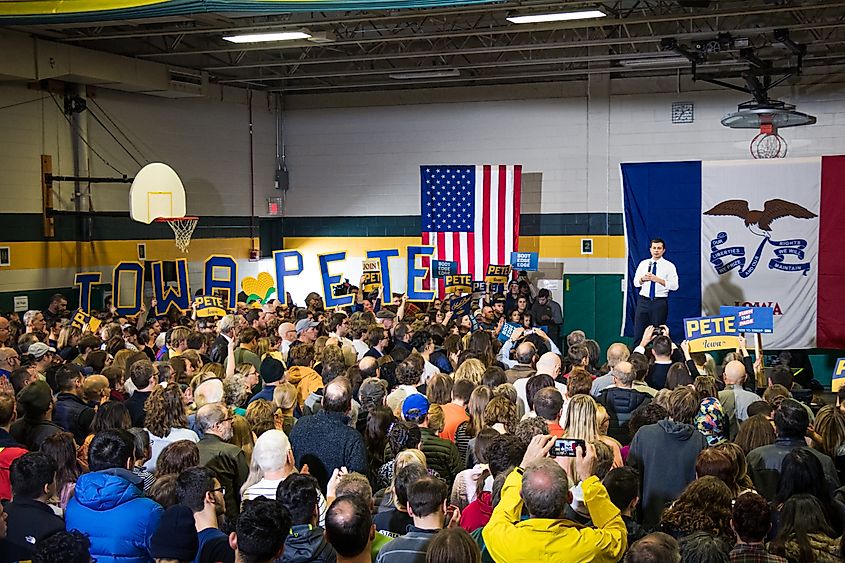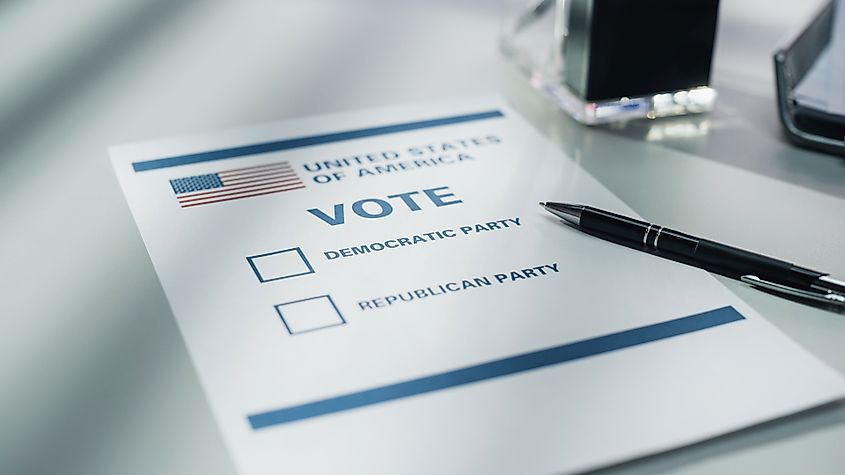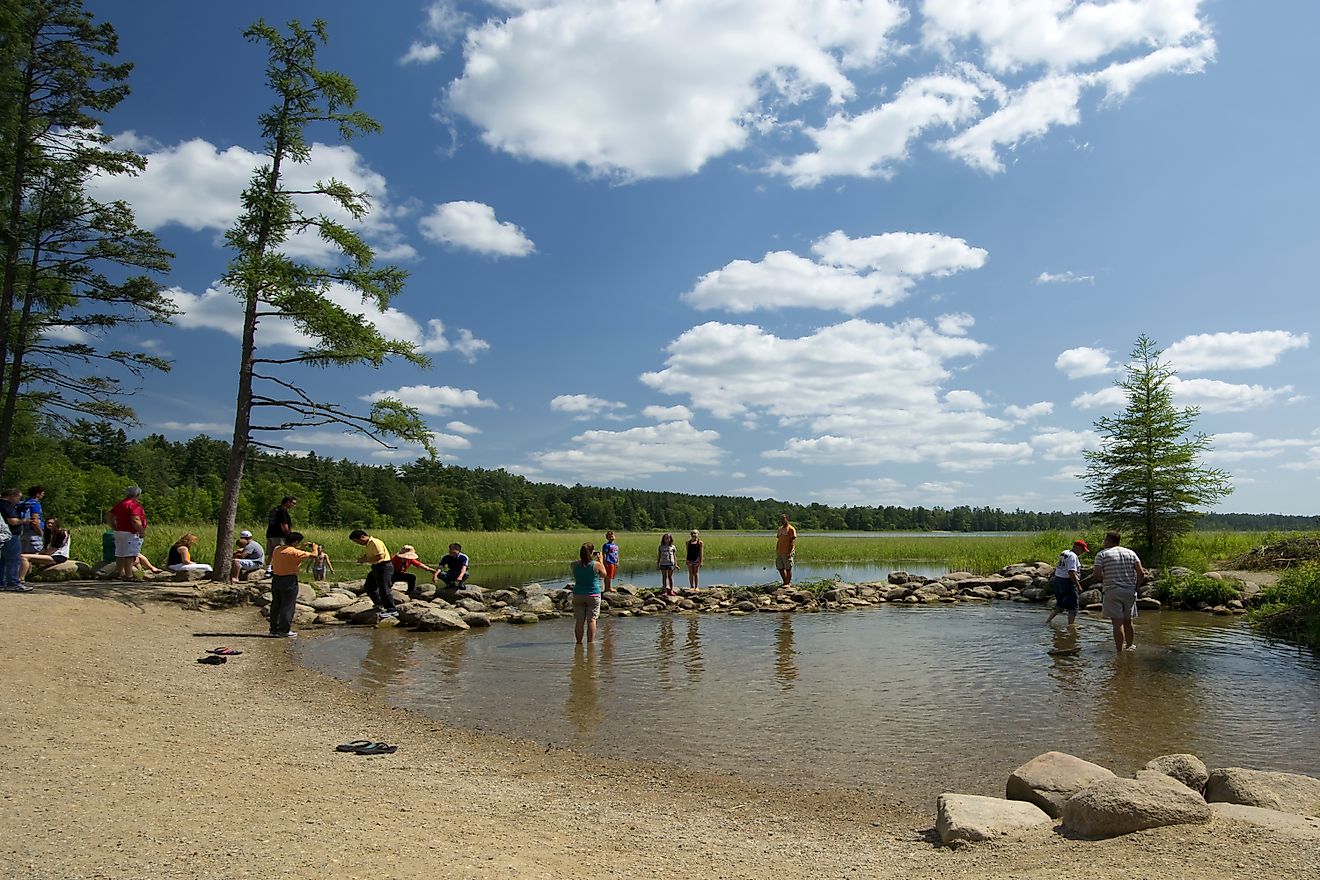
What's The Difference Between Primaries and Caucuses?
In the dynamic world of American democracy, primaries and caucuses play crucial roles. They are the first steps in choosing presidential nominees and have a big impact on national politics. Both mechanisms are integral to the democratic process, shaping the path to the White House in distinct ways.
However, the differences between primaries and caucuses may be confusing for many people. Let’s simplify these electoral processes, explaining how they work, their significance, and their effects. Get ready to dive into the essentials of American democracy, making sense of the complex processes of primaries and caucuses.
Primaries and Caucuses

Primaries and caucuses are both ways for party members to pick their favorite presidential candidate, but they're pretty different in how they work and involve people. Primaries are official, state-run events where party members vote in secret, just like in a general election. Some primaries are open, meaning any registered voter can join in, regardless of their party. Others are closed, so only party members can vote.
Caucuses, though, are smaller, more personal meetings run by the parties themselves. Here, local party members get together, talk things out, and then vote, usually in a way that everyone can see. This approach really focuses on community involvement and discussion, which is a big change from the more private and quick process of primaries.
States choose between primaries and caucuses based on their traditions, what they're able to do logistically, and how they think about the voting process. For example, Iowa is known for holding the first caucus in the presidential nomination process, which is done through debate and community engagement. Meanwhile, New Hampshire conducts the first primary, favoring a quicker and simpler voting method.
How They Work

American at a polling booth.
Learning about primaries and caucuses is key to understanding how the US electoral system works. Each has its way of getting voters involved and deciding winners.
Primaries Explained
Primaries are pretty straightforward, much like a general election. They can be open, closed, or semi-closed, depending on the state. In an open primary, any registered voter can vote in any party's primary, regardless of their party affiliation. This happens in places like Virginia, where you don't register by party. On the other hand, closed primaries only let you vote if you're registered with the party, which is what you'll find in states like Pennsylvania. Semi-closed primaries are in the middle, letting unaffiliated voters pick a primary to vote in, like in Massachusetts.
A Look at Caucuses
Caucuses are a bit more complicated, and they happen in stages. The Iowa caucuses are a well-known example that kicks off the race for presidential candidates. People meet in local spots like schools and decide on candidates. If a candidate doesn't get enough support, which is often 15% in Democratic caucuses, their supporters can then switch to another candidate or try to get more supporters for their first choice. This process is unique to caucuses and shows the community-based, discussion-heavy approach they take.
Both systems are part of the democratic tradition of directly involving citizens in choosing nominees, albeit in very different ways that showcase the diversity, tradition, and history of American political life.
Types And Variations

Primaries and caucuses come in different forms due to the unique traditions and rules of each state.
Open primaries let voters pick which party's primary they want to vote in, regardless of their party registration. For instance, New Hampshire has an open primary where voters can choose on primary day which party's ballot to use.
Closed primaries, on the other hand, only allow voters registered with a party to vote in that party's primary. This is seen in New York, where it encourages loyalty to the party and reduces the chance of voters from other parties affecting the outcome.
Semi-closed primaries, like those in North Carolina, offer a middle ground where voters not affiliated with a party can choose which primary to vote in. Still, party members can only vote in their own party's primary.
When it comes to caucuses, the differences are more about how they're run rather than who gets to participate. For example, the Iowa caucuses are known for their public voting and the chance for voters to change their minds. In contrast, Nevada has introduced options like early voting and virtual participation to make it easier for more people to take part. These changes show how caucus systems are changing to be more inclusive.
These examples show the various ways states try to involve their citizens in the democratic process, each with its own set of rules and innovations.
Awarding Delegates

Bill Clinton giving a speech at the University of Denver, campaigning for Hillary Clinton. Image credits: Evan Meyer via Shutterstock
The main goal of primaries and caucuses is to select delegates who will represent their state's preference for a presidential candidate at the national party convention. However, the way delegates are awarded can vary widely between states and parties, making the process somewhat complex.
Proportional Representation is a common approach where candidates receive delegates in proportion to the percentage of votes they get. For example, if a candidate wins 50% of the votes in a state that has 100 delegates, they would get 50 of those delegates. This method tries to reflect the voters' choices more accurately. States with a lot of delegates, like California and Texas, use this method in Democratic primaries.
Winner-takes-all primaries award all the delegates to the candidate with the most votes. This can quickly elevate a candidate's position, which is why these states are crucial in a campaign. The Republican Party allows this method, especially in later primaries, to help choose a consensus candidate.
A hybrid system combines proportional and winner-takes-all methods, offering a mix of broad representation and rewards for winning. Texas Democrats once used a unique hybrid called the Texas Two-Step, which included primary and district-level caucuses. This allowed for more participation and made sure that active party members played a big part in choosing delegates.
These different methods show how decentralized the US electoral process is. Each state has its way of doing things, which shows its political culture and strategy for getting voters involved and selecting a candidate who fits the party's values and has a good chance in the general election.
When and Where: Scheduling of Primaries and Caucuses

The schedule for primaries and caucuses in the US varies widely, usually happening from early February to June in a presidential election year. The Iowa caucuses often kick off the primary season in early February, followed by the New Hampshire primary. For example, Barack Obama's win in Iowa in 2008 significantly boosted his campaign's visibility.
These early states are key in setting the race's tone, with candidates pouring in a lot of resources and effort to start strong. Super Tuesday, typically in March, is a crucial day when many states, including big ones like Texas and California, have their primaries or caucuses at the same time. It's a make-or-break day that can really show who the leading candidate might be because of the huge number of delegates available.
In 2020, Joe Biden's performance on Super Tuesday was a turning point in his campaign. The timing and order of these events matter a lot since early wins can give a candidate momentum, while early losses can lead to dropping out of the race.
Grasping the Nuances of the Electoral System
Primaries and caucuses are key to American democracy, giving people different ways to get involved and make their voices heard in elections. Primaries work like regular elections, allowing secret voting and wide participation, while caucuses focus on group discussions and grassroots activity. These methods vary in how they allocate delegates, their schedules, and where they happen, highlighting the electoral process's decentralized nature and the diversity of American politics. Even though they're different, both aim to nominate candidates that represent their party members' preferences. It's important to understand these details to understand how the American electoral system works and how presidential candidates are chosen. At their core, primaries and caucuses celebrate democratic engagement, proving that citizens' involvement is crucial in shaping the country's direction.







